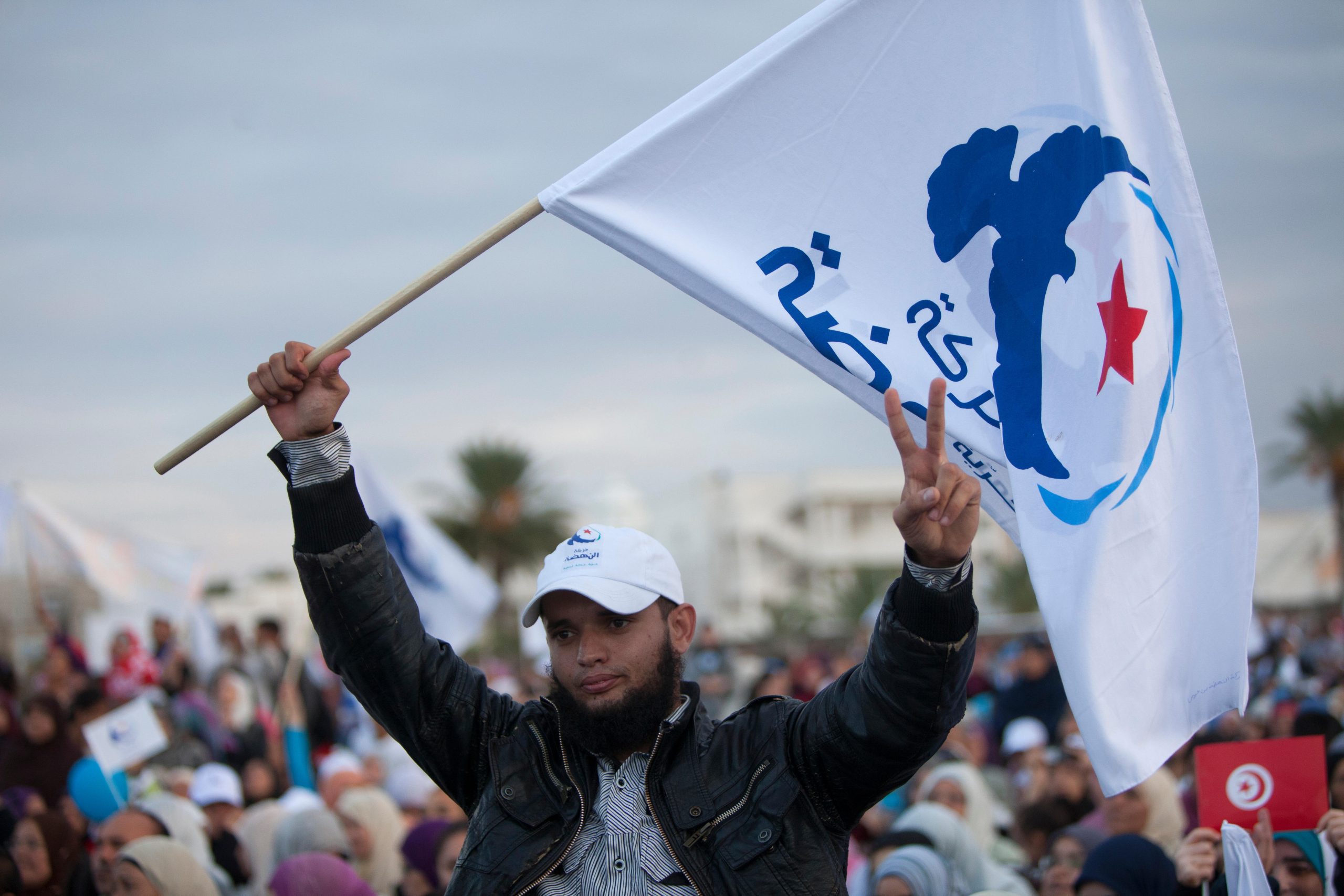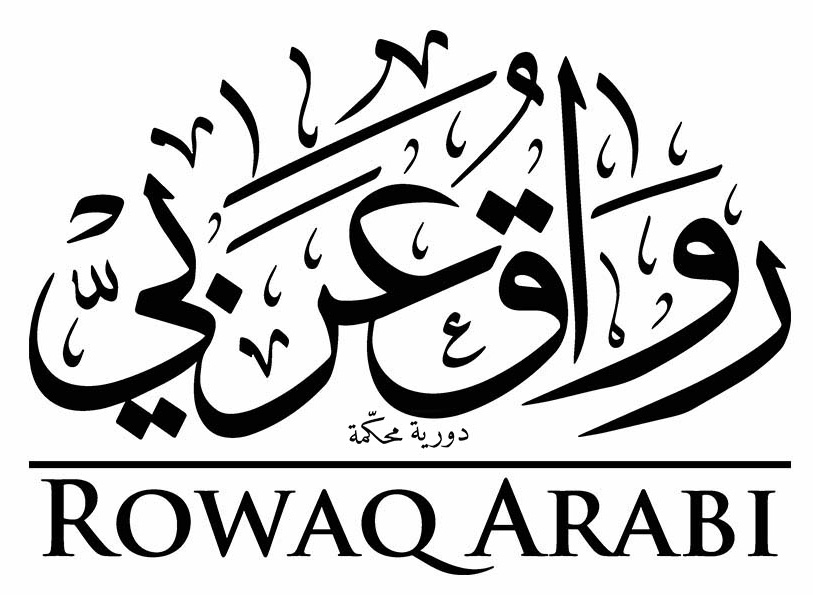Views: Islamists in Power and the Difficulty of Assimilating Human Rights Principles

Citation: Romdhani, Messaoud (2023) ‘Views: Islamists in Power and the Difficulty of Assimilating Human Rights Principles’, Rowaq Arabi 28 (2), pp. 23-30, DOI: 10.53833/ECHZ3750
When discussing the relationship between political Islam and the human rights values enshrined in international conventions and instruments, which are attached to oversight bodies that apply these values to all human beings regardless of nationality, religion, and ethnicity, we are confronted with several contradictions, most importantly the fluidity of Islamist discourse and the way it vacillates between fundamentalist principles and the values of modernity. One moment it is firmly grounded in a fundamentalist frame of reference and the next it is more flexible; at times it invokes scripture, while at others it adopts a pragmatic posture, bespeaking a willingness to negotiate and make concessions, even if certain ‘interpretations’ run up against its revered tenets.
The Arab uprisings, with their slogans that invoked the values of modernity, constituted a real test of the extent to which political Islamist movements had accommodated these values and their ability to alternate between scripture and politics, and religious fundamentals and human rights values. The early, overwhelming electoral successes of the Muslim Brotherhood in Egypt (2012) and the Ennahda movement in Tunisia in (2011) and their role in drafting their countries’ respective post-revolution constitutions presented them with a genuine challenge, bringing them face to face with civil society organisations, liberal and secular forces, and Western states that bet on democratic transitions in the Arab region and at times pressured them to make more concessions and break with radical groups and their extremist premises.
This essay looks at these two important experiments—the Ennahda movement in Tunisia and the Muslim Brotherhood in Egypt—to assess the capacity of political Islam to accept human rights. These two movements were chosen for several reasons. Firstly, they both came to power through democratic elections after decades of tyranny, fraud, and human rights violations. Also, by virtue of their comfortable parliamentary majorities, they both played a key role in drafting their countries’ constitutions (the 2012 constitution in Egypt and the 2014 constitution in Tunisia), which were to reflect the aspirations of the demonstrators in Habib Bourguiba Street (14 January 2011) and Tahrir Square (25 January 2011) and their demands for freedom, democracy, and justice. In both cases, I will attempt to examine the obstacles faced by the two movements in governance and state administration, especially as posed by their oscillation between religious texts and the requirements of modernity.
Between Islam and Human Rights
Does Islam accept human rights in the modern sense of the term? ‘No’ seems the obvious answer. Islam has its own frame of reference and laws found in the Quran, Sunna, and the works of the various schools of jurisprudence, and political Islam at one time saw Islam as a fixed ideology and the Quranic text as a constitution. In contrast, the frames of reference for the modern state are democracy, the consolidation of the civic sphere, equality and respect for individual rights, and the separation of religion and state.
Some academics, however, see no contradiction between Islam and human rights, arguing that the focus should be on understanding the essence of religion and its purposes through a modern reading of the Quranic text itself instead of its exegetes. Yadh Ben Achour, a Tunisian jurist and rights advocate, believes that the problem is that conservative, traditional readings sully the image of Islam. These cleave to the letter of legislative precepts ‘while Islam is “bigger and greater than Muslims” ….’ it carries within it an open-minded method that allows us to synthesise religion and human rights.[1]
Ben Achour discusses this synthesis in his book, The Other Fatiha: Islam and Human Rights Thought,[2] pointing out, for example, that dozens of verses in Surat Al-Isra contain the basic pillars of human rights and are in fact fully consistent with modern human rights. The primary problem, then, is the fundamentalist reading of scripture. For Ben Achour, this reading is superficial and unwilling to grapple with the substantive content of the Quranic text and understand its approach and humanistic dimensions, although he does admit that ‘religions based on God as the Lawgiver find some difficulties with human rights’.[3]
Despite its importance, Ben Achour’s reading is not a departure from earlier enlightenment thinkers who, since the late nineteenth century, began to perceive that the gap between Islam and the West could largely be attributed to cultural causes. These thinkers believed that a narrow understanding of religion that hewed strictly to fundamentalist interpretations was a barrier to civilisational or cultural progress, so religion should be adapted to the needs of modernity without abandoning it completely.
Attempts to marry Islam with modernity remain purely theoretical unless tested on the ground. The nation state’s approach to religion in the 1960s was confused and opportunistic, limited to exploiting the religious sphere to justify its authority. The state took control of public religious space—fatwa institutions and mosques—exercising strict control over these spaces and dictating its official political discourse to imams. The disruptions to the religious sphere that ensued were exploited by protest-oriented political Islamist groups, which broke free of state control before the Arab revolutions to establish a different Islamist ideology. At many junctures, these movements united with opposition leftist or liberal political forces, as when the Muslim Brotherhood participated in the Kefaya movement before the fall of Mubarak and Ennahda took part in the 18 October 2005 movement.
The Arab uprisings opened up vistas that the Brotherhood and Ennahda had never dreamed of. After decades of persecution, prisons, and bans, they were now rightfully assuming the reins of power after free elections that gave them legitimacy and allowed them to draft laws and enact them by a comfortable majority. At this point, they faced a choice: Islamise society and apply Sharia, or represent the slogans of the revolution?
Political Islam and the Demands of the Revolution
In fact, there was a huge gulf between the Islamic ideology of political Islam, which Islamist movements had attempted to make into a constitution for rule at several periods, and post-revolutionary expectations in Egypt and Tunisia. This gap gave rise to challenges that weakened political Islam and eroded its credibility. Popular expectations after the revolution had little to do with the application of Sharia or the Islamisation of society, but rather with the social rights that had been denied for decades, including the right to work as a guarantor of dignity. Liberal parties and civil society organisations, meanwhile, were interested in democratising politics. At many stages, the Ennahda movement thus found itself trapped between multiple challenges: young people were demonstrating and protesting virtually every day for what they considered their ‘revolutionary and constitutional’ entitlement to work; civil society and the feminist movement were demanding a civil state and gender equality and calling for recognition of all the freedoms enshrined in international treaties, such as freedom of belief and freedom of conscience, and urging accession to all international conventions related to equality; meanwhile, Ansar al-Sharia, with its violent rhetoric and practice, was growing, and the group expected to be shown greater tolerance by a movement that controlled the state apparatus and was similarly guided by an Islamic frame of reference.
In Egypt, the Muslim Brotherhood had gained significant experience with politics in the years before the 2011 revolution, participating in the 2005 parliamentary elections despite the opposition boycott and winning several seats, which prepared it for the presidential and parliamentary elections in Egypt in 2012. But participation in electoral politics is not the same as assimilating democracy as a political culture characterised by intellectual diversity, pluralism, and dialogue. The Brotherhood found it difficult to fully accommodate democracy because its literature and practice emphasised homogeneity, unity, conformity, and the setting aside of differences rather than freedom to criticise, freedom of opinion, and the acceptance of dissenting opinions.[4] In fact, the Brotherhood continued to seesaw between ‘a traditional vision associated with the ideas of the movement’s founder, Hassan al-Banna, who had advocated the establishment of an Islamic state…and a modern vision established by intellectual revisionism in the group that stressed the need to accept the ground rules of democracy’.[5]
Human Rights in the Brotherhood’s Constitution
In October 2012, the Second Constituent Assembly submitted the final version of the Egyptian constitution to President Mohamed Morsi over the objections of civil society, which had demanded a society-wide debate on the charter prior to a referendum. Many observers commented on its final wording, which contained no reference to the civilian nature of the state, respect for religious minorities, or Egypt’s commitment to international human rights conventions.[6]
In fact, the Brotherhood’s constitution (2012) fell short in many areas with respect to its overall adherence to human rights and the ambiguity of many of its provisions. To take one example, the lack of respect for minority rights was evidenced in Article 4, which made al-Azhar a source of ‘Islamic outreach, theology, and the Arabic language’, while Article 2 explicitly made the principles of Islamic law a ‘source of legislation’. The document also deliberately confused democracy with the Islamic idea of shura (consultation), as if they were analogous despite the substantial differences between them. In short, we find the age-old contradiction that has characterised most political Islamist movements: they accept democracy out of expedience, seeing elections as a way to reach power, but remain attached to their conservative principles and reluctant to accept all the pillars of democratic governance, including respect for cultural and religious pluralism and religious and sexual minorities, the separation of religion and state, and gender equality.
Ennahda and the Constraints of Reality
Ennahda’s trajectory was different, not only because it held power for nearly a decade, but also because of its history and its engagement with other forces. In addition, civil society and liberal parties within and outside the National Constituent Assembly exerted major pressures, which forced Ennahda to concede key aspects of its Islamic vision when drafting the constitution. It thus abandoned its notion of complementarity between the sexes and replaced it with full equality, withdrew the reference to the role of Sharia in law-making, accepted freedom of belief and conscience, and agreed to the principle of criminalising takfir. Rached Ghannouchi, the head of the movement, considered these concessions necessary because the movement believed that governance was best carried out by ‘convincing, not coercing’ the Tunisian people.[7] In fact, Ennahda changed many of the positions it held in its first year in power, showing a readiness to ease back from, and even suspend, its initial goal of spreading Islamic culture in accordance with the internal and external balance of forces. In other words, it modified its stances under pressure from civil society, the international community, and local experts although some leaders still believed in the need to inject the values of ‘Tunisian Islam’ into society’.[8]
The Indecision of Islam after the Arab Uprisings
In the introduction to his book, Indecisive Islam: Revolutions and Islam after Dictatorship,[9] thinker and politician Hamadi Redissi wrote that tyranny was spent after the Arab revolutions and that Islam after authoritarianism was ‘first and foremost a rejection of dictatorship’.[10] The Islamist exception that placed religious thought beyond history, he said, had shown its receptiveness to modernity and its ability to replace the ‘the fundamental exceptionalism with an enlightened, civic fundamentalism’.[11] Redissi asserted that the ballot box could liquidate ‘authoritarian Islam’ if several conditions were met, including ‘consensual thought that animates political actors and social strata that believe in democracy…living amid an organised civil society under the rule of law’.[12] This statement could be applied to Ennahda, which evolved considerably, accepting a constitution that guarantees many rights and freedoms and deciding in its tenth conference to separate religious outreach from political activity.
In contrast, the Brotherhood’s experience in Egypt during its brief tenure in power did not herald notable change that led it to abandon fundamentalism and accept enlightened, civic ideas. One hundred days into Mohamed Morsi’s presidency, the Cairo Institute for Human Rights Studies issued a report on the status of human rights in Egypt. The report found that human rights issues were not evident in the policies and practices of the Egyptian president, despite his legislative and executive powers, and attributed this gap to Morsi’s fuzzy understanding of human rights and his failure to take advantage of relevant, pro-active initiatives. In fact, the report concluded that the limited steps taken in this direction were prompted by popular pressure.[13]
The Brotherhood in Egypt: An Unsympathetic Demise
In Egypt, the Muslim Brotherhood misread the political reality, taking their electoral success as an irreversible popular mandate,[14] which led them to ignore the voices of liberal forces and civil society that demanded respect for democratic principles and human rights. This brief period in Egypt thus ‘invalidated the idea that Islamist movements, if included in a democratic system, will moderate and democratize’.[15]
Roughly a week before the military coup against democracy, twenty Egyptian human rights organisations released a statement that painted a bleak picture of the human rights situation, from the referral of hundreds of civilians to military courts to ‘the spread of torture in prisons and detention facilities’ to ‘forcing detained female activists to undergo virginity tests. The statement concluded that human rights crimes were committed over the previous year ‘on a scale that rivaled the Mubarak regime’.[16] Were these actions one reason for the Brotherhood’s resounding collapse at the hands of the military, having failed ideologically, politically, and organisationally before the coup? This is the belief of many observers, who note that the Brotherhood did not find much popular support when the crackdown came.[17]
Certainly, Egypt did not need a military coup that would compound the crisis, intensify repression, and effect a permanent break with democracy. But during their short rule, the Brotherhood should have adapted to the democratic transition and assimilated the concepts of modernity, such as democracy and human rights— concepts that the Ennahda movement was more able to absorb and engage, despite its multiple instances of backsliding.
Ennahda Movement: From Indecision to Resolve
The post-revolution period saw the state apparatus debilitated and disintegrating, and religious currents—organisations, parties, and outreach movements—exploited this weakness to present themselves as an alternative to all civil movements. The revolution, which had called for rights, freedoms, and justice, saturated the religious sphere, according to Hamadi Redissi, as religious actors proliferated and ‘everyone seized a piece of Islam’.[18]
There was not only an attempt to Islamise the public sphere. Violence was used as well, as shrines were demolished, Sufi tombs came under attack, and sit-ins in colleges demanded the imposition of the niqab. Ennahda vacillated for a time, hoping it could domesticate the violent Ansar al-Sharia, until the latter moved from religious outreach to an embrace of jihad, carrying out assassinations, threatening jurists, politicians, and trade unionists, and attacking and looting the US embassy. At this point, then Interior Minister Ali Laarayedh decided to ban the group.
Separating Religious Outreach from Politics: Ambiguous Terms
After the adoption of the 2014 constitution, which provided for freedom of belief, freedom of conscience, equality between men and women, respect for human rights with reference to civic, universal values, and the criminalisation of takfir, rumblings of discontent were heard within Ennahda. Historical leaders from the movement who had been imprisoned for decades, such as Habib Ellouze and Sadok Chourou, both members of the National Constituent Assembly, could not stomach the wholesale abandonment of the principles and purposes of Sharia.
The movement’s tenth conference[19] charted a new course that attempted to break with its purely Islamist past. The movement that had initially been inspired by the Muslim Brotherhood decided to become a ‘democratic party’ that fully assimilated the elements of modernity.[20] At the outset of the conference, Ghannouchi outlined the movement’s new vision. Ennahda was preoccupied with identity when identity came under threat in the 1970s, he said, but now it sought to become ‘a Muslim national democratic party dedicated to political action’. But Ghannouchi’s phrasing was ambiguous. What exactly did ‘a Muslim national democratic party’ mean? What are the features of ‘Muslim democracy’, or in other words, what is it that links Islam to democracy? Does it mean the democratisation of Islam or the Islamisation of democracy?
In any case, the separation between religious outreach and politics did not constitute a major turning point for Ennahda and should not be seen as a decisive break with the movement’s past, in the sense of it morphing into a political party with the capacity to absorb the values of modernity and definitively leave behind its fundamental principles. It should rather be viewed as a shift within the Islamist project that accomplished three chief goals: first, side-lining the extremist faces that refused to acclimate to the new reality and accept the contexts imposed by post-revolutionary conditions; second, drawing a clear line between the movement and radical Islam after a period of hesitation and dissembling; and three, moving closer to the liberal parties that were still reluctant to deal with Ennahda.
In conclusion, the experience with power for both the Muslim Brotherhood in Egypt and the Ennahda movement in Tunisia was a test of the extent to which they could engage with democracy and human rights and an opportunity for them to gradually shed a legacy of conservative fundamentalism. The momentum of the revolutionary movement and its demands created the conditions for a paradigm shift towards modernity in all its dimensions. Despite the confusion that prevailed when they first assumed power, political Islamist movements are not homogeneous. Ennahda, which remained in power the longest, engaged with civil, democratic, and human rights discourse, not only because of the imprint that the ‘secular’ Bourguiba legacy left on Tunisian society, but also because the movement had interacted with human rights groups and liberal and leftist parties at several points before and after the revolution, especially the 18 October movement.[21] As a result, the dialogue between political Islamists and civil and modern forces encouraged the movement to moderate its positions, its firm attachment to Sharia, and its fundamentalist insularity. In contrast, the Muslim Brotherhood was not long enough in power to realise that democracy is not solely about getting the upper hand. It failed to understand that dialogue with other civic and political actors is the only means to ensure peaceful coexistence and that history does not move backwards.
Now that the military coup has cut short the arc of Egypt’s nascent democracy, for all its faults and reversals, and Kais Saied has turned against the constitution that brought him to power and begun targeting Ennahda and prosecuting and imprisoning the movement’s followers, the avenues of dialogue with political Islam have been blocked and political and civil forces have been weakened. As a result, more radical parties have stepped in to fill the vacuum, posing a threat to democracy, pluralism, and human rights and plunging the region back into tyranny.
This article is originally written in Arabic for Rowaq Arabi.
[2] Ben Achour, Yadh (2012) al-Fatiha al-Ukhra: al-Islam wa-Fikr Huquq al-Insan [The Other Fatiha: Islam and Human Rights Thought] (Tunisia: Dar al-Janub Publishers).
[3] Ibid., p. 153.
[4] Mahfouz, Eissa (2021) ‘Tatawwur Isti‘ab Mafhumay al-Dimuqratiya wa-l-Dawla al-Haditha ‘ind Jama‘at al-Ikhwan al-Muslimin fi Misr’ [The Egyptian Muslim Brotherhood’s Evolving Assimilation of the Concepts of Democracy and the Modern State], Dafatir al-Siyasa wa-l-Qanun 13 (2), pp. 475–486, https://www.asjp.cerist.dz/en/article/151483.
[5] Ibid.
[6] Imara, Hussein (2012) ‘al-Hurriyat wa-Huquq al-Insan fi al-Dustur al-Misri al-Jadid bayn al-Libaraliyin wa-l-Islamiyin’ [Liberties and Human Rights in the New Egyptian Constitution between Liberals and Islamists], France 24, 25 December, accessed 14 August 2023, https://shorturl.at/jpzNV.
[7] Marks, Monica (2014) ‘Convince, Coerce, or Compromise? Ennahda’s Approach to Tunisia’s Constitution’, Brookings Doha Centre Analysis Paper 10, February, https://t.ly/_hSfj.
[8] Ibid.
[9] Redissi, Hamadi (2020) al-Islam al-Mutaraddid: al-Thawrat wa-Islam ma ba‘d al-Istibdad [Indecisive Islam: Revolutions and Islam after Dictatorship], al-Sayyed al-Alani (trans.) (Lebanon: Dar al-Jamal Publications).
[10] Ibid., p. 9.
[11] Ibid., p. 11.
[12] Ibid., p. 12.
[13] Cairo Institute for Human Rights Studies (2012) ‘After President Mohamed Morsy’s First 100 Days: Worrying Indications for the Future of Human Rights; Major Crises Remain Unresolved’, 15 October, https://t.ly/mPLmk.
[14] El-Sherif, Ashraf ‘The Egyptian Muslim Brotherhood’s Failures’, Carnegie Endowment for International Peace, https://shorturl.at/iABQZ.
[15] Ibid.
[16] Egyptian Initiative for Personal Rights (2013) ‘Joint Press Release by 20 Rights Organizations: One Year into Mohamed Morsi’s Term: Manifold Abuses and the Systematic Undermining of the Rule of Law’, 27 June, https://t.ly/lFgGS.
[17] El-Sherif.
[18] Redissi, p. 72.
[19] Held 20 to 23 May 2016.
[20] Al-Talidi, Bilal (2018) ‘al-Nahda al-Tunisiya: Qira’a fi al-Fasl bayn al-Da‘wi wa-l-Siyasi’ [The Tunisian Ennahda: A Reading of the Separation between Outreach and Politics], Arabi 21, 2 November, accessed 14 August 2023, https://shorturl.at/psAK1.
[21] The movement took shape after a strike by a group of political and rights forces in Tunisia on 18 October 2005, in pursuit of three demands: the release of political prisoners, a general amnesty, and press freedoms. After the strike, there was a debate with Islamists over gender equality and the relationship between religion and state. See: https://shorturl.at/dJMQ5.
Read this post in: العربية





